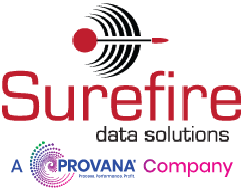Picture it: rows and rows of human drones hunched over stacks of files, clutching chunky black markers, combing through reports until their eyes glaze over. Wow. Pretty picture, right? That was the reality of redaction for years.
At its core, redaction is the process of editing a sensitive document to prepare it for publishing, so that the remaining text may be shared with a party that is not authorized to view the entirety of the piece. It removes all traces of confidential content. For law firms and legal purposes, this means removing private, personal data of clients before producing the documents for the court or opposing counsel, complying with the Freedom of Information Act. This selective practice hides what should be kept safe, while maintaining the overall integrity of the document. Manual redaction (our happy drones from earlier) is a process that costs substantial time and money. Completing this process by hand, as this article points out, meant scrawling over blocks of text with a marker or redaction tape, and then photocopying the document. The going was slow and the work was menial.
Not only was the work labor intensive, but in some cases hackers can still uncover confidential, personal information, which poses a huge security risk to an organization. Lawyers and government agents probably feel a shudder ripple down their spines at the word redaction; Rick Borstein’s Redaction in a Digital World warns of bankruptcy lawsuits and other horror stories that occur thanks to ineffective technique: “Improper redaction most often occurs when text or images are covered up instead of being completely purged from the document.” Failures in the process vary from simple embarrassment, or can result in identity theft, or disclosure of commercial trade secrets. Backed up by A Primer on Using Electronic Redaction, the fact is that the volume of data continues to grow greater, and compliance regulations and costs are going to grow along with it.
While redaction is a simple concept, it can still prove to be problematic in execution. The Primer points out that it is not the actual redaction process that is most vital, but in ensuring that the process is executed correctly. Opin’s Michael Probert published an account that reveals the Medical Council of New South Wales had improperly redacted Protected Health Information in some of their PDF reporting, and Google’s search engine bots revealed this sensitive information in search results. Problematic, to say the least.
Electronically stored information needs to be redacted electronically. Again, simple idea.
Don’t lose hope, there are easier (and safer) ways! No matter what you do, redaction needs to have the same outcome: permanently voided data. Specialists in electronic document security have developed trustworthy applications that can put minds at ease. Electronic redaction, through certain software solutions, provides the opportunity to preserve the original file for legal review and redact the necessary information. Personally Identifiable Information (PII) can be seen through marker black-outs, redaction tape can be removed, and simpler software might miss the necessary text. Surefire’s Redaction Solution promises compliance as an automated, end-to-end solution. Secure electronic redaction alleviates cost and risk. Click here to request a free trial of our service.
Rather than risking mishaps due to overtired worker drones, you can protect your clients and protect your organization through electronic redaction services. Or, at least invest in some Starbucks for your team of worker bees.
In today’s challenging business environment, companies that thrive are those that are committed to the continuous improvement of their business and the processes that run them. At Surefire Data Solutions, we are providing innovative technology solutions that enable Accounts Receivable Management (ARM) professionals to reduce the cost, complexity and risk associated with doing business.


